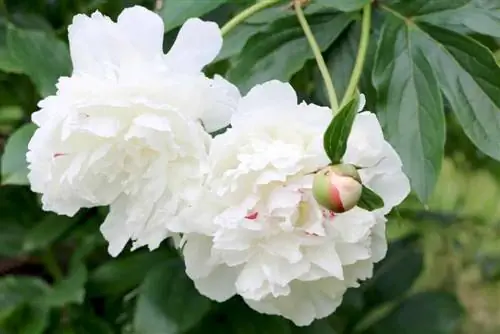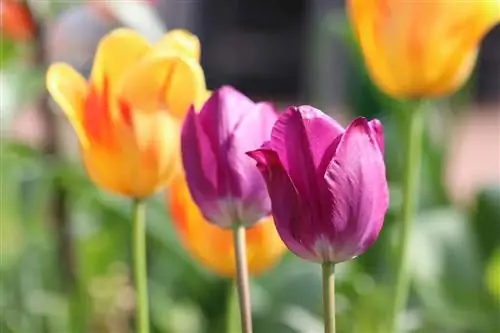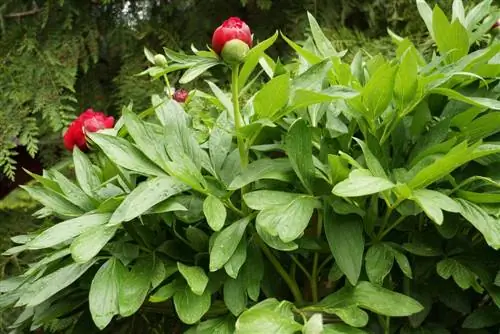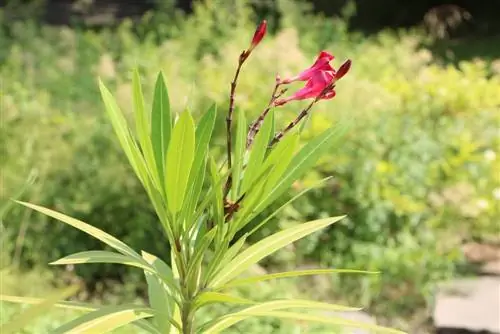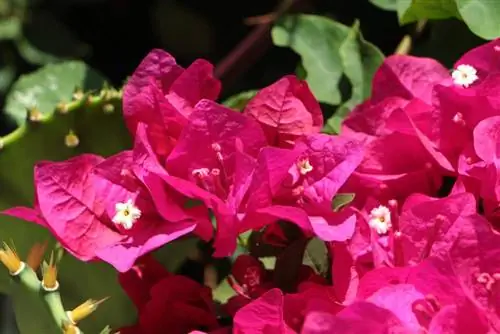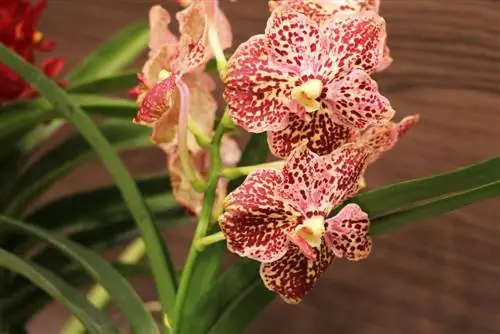- Author admin [email protected].
- Public 2023-12-17 03:39.
- Last modified 2025-06-01 06:48.
Peonies beautify the garden very early in the year with their pretty and fragrant flowers. But they are also quite sensitive and react sensitively to cultural grievances and care errors. If the peonies are not blooming, various factors should be examined more closely. If you know what to look out for, you can usually quickly find the cause of the declining flowering power and be able to remedy it specifically and with simple means and measures.
Location
If the peony is too shady or too close to other plants, it lacks the strength to produce flowers. If there is insufficient light, more energy is often put into the formation of leaves. The flower does not have to stop completely, but buds usually appear less frequently and in smaller numbers. When planting close to other plants, a competitive situation arises. There may then not be enough nutrients left for the formation of buds and flowers.
Tip:
Changing locations is difficult for peonies, so the planting location should be chosen carefully from the outset. As a last attempt to save them, it is possible - as long as the taproots are dug very deep.
Substrate
Substrate that tends to compact or is already compacted makes it difficult for the peony to absorb nutrients and supply itself with moisture. Care should therefore be taken to ensure that the soil is and remains appropriately loose. Soil containing clay should therefore be mixed with sand and gravel and thoroughly dug up and loosened before planting. It also makes sense to incorporate some bark mulch. This measure can be carried out regularly, annually or every two years.
Plants
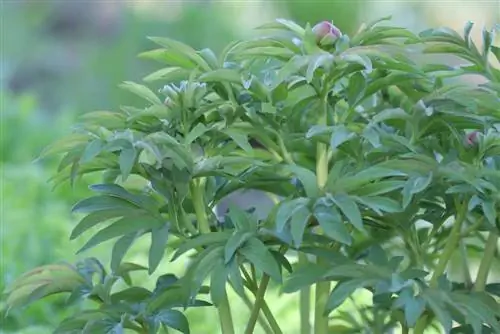
Both the time of planting and the depth of planting can cause the peony to fail to bloom. Peonies that were planted in spring will usually not produce any flowers in their first year. If perennial peonies are covered with soil deeper than three centimeters above the buds, they react sensitively and the flowering power is impaired. The situation is different with shrub peonies. Here the finishing point is used as a guide, which should be five to ten centimeters deep below the substrate.
Pouring
The peony reacts sensitively to waterlogging, but also to prolonged dryness. You should therefore pay attention to the following points:
- Loose substrate that ensures water drainage
- Insert a drainage layer in locations with high groundwater
- Watering only as needed when the top layer of soil has dried out
- Regular checks of soil moisture, especially in summer
Fertilize
The golden mean must also be found when it comes to nutrient supply so that the peony can produce flowers. An overdose of nitrogen can be just as responsible for flower failure as a nutrient deficiency. Since it is a low-nutrition plant, a nutrient deficiency is unlikely. A one-time application of compost before budding, i.e. in early spring, is sufficient. After that, further fertilization can be dispensed with.
However, the condition of the soil plays a role here too. As already mentioned, if the soil is compacted, it makes it more difficult for nutrients to be absorbed. Even if the soil contains sufficient quantities, they cannot reach the plant. Therefore, the entirety should always be considered when providing care.
Blend
Too early or too radical - the peony takes offense at both. Since it grows only slowly, very heavy cutting can lead to a longer absence of flowering. If you cut before flowering, buds will fall victim or the energy will be directed towards the formation of leaves instead of flowers. It is better to cut back dead shoots and annoying branches in early autumn. This means that the peony and its flowers can sprout again next spring.
Tip:
If withered flowers are removed early, the plant's energy is not used to form seeds, but rather to develop buds again.
Wintering
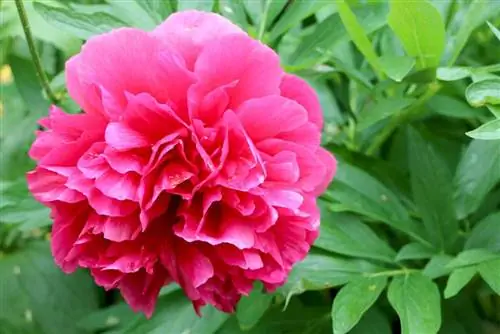
Peonies are actually quite frost-resistant, but frostbite can still occur, especially in young plants. To preserve and protect the plants, they can be covered with brushwood and bark mulch in autumn.
Tip:
When using bark mulch, the amount of compost added in spring can be slightly lower, as this also supplies the peony with nutrients.
Diseases and pests
Pests are rarely found on the peony. If you notice numerous ants on the plant, you can safely ignore them. The insects, which are useful in themselves, are attracted to the sweet plant sap but do not cause any damage. For caterpillars, collecting them by hand is sufficient. Even without this measure, they usually cannot cause any major damage. The situation is different with diseases and, more precisely, with fungal infections. These require quick action. The signs of fungal infections are:
- Withering, dying shoots and buds or flowers
- Falling Leaves
- Brownish to purple spots
- Stunty or stagnant growth
If these symptoms are noticed, affected sections should be removed generously. In addition, an appropriate fungicide from a specialist retailer should be used. As a preventive measure, experience has shown that it makes sense to water the peony regularly with nettle broth. To do this, about a kilogram of crushed nettles is soaked in ten liters of water and used for watering after 12 to 24 hours. Since the nettle broth also supplies the peony with nutrients, it is best to avoid adding additional compost for this measure.
Tip:
Diseases such as fungal infestation can also be prevented by not planting peonies in one location in direct succession. In order for the long taproots to rot sufficiently, an interval of around ten years should be maintained.
Conclusion
If you pay attention to the needs of the peony when choosing the location and substrate and adapt the care accordingly, you can strengthen the flowering power of the plant and prevent loss of buds. If the flower has already failed, there is no way around investigating the cause. However, problems can often be solved very easily.

